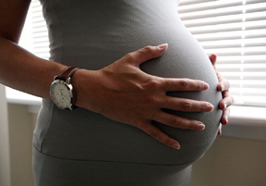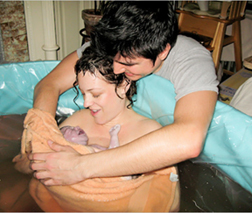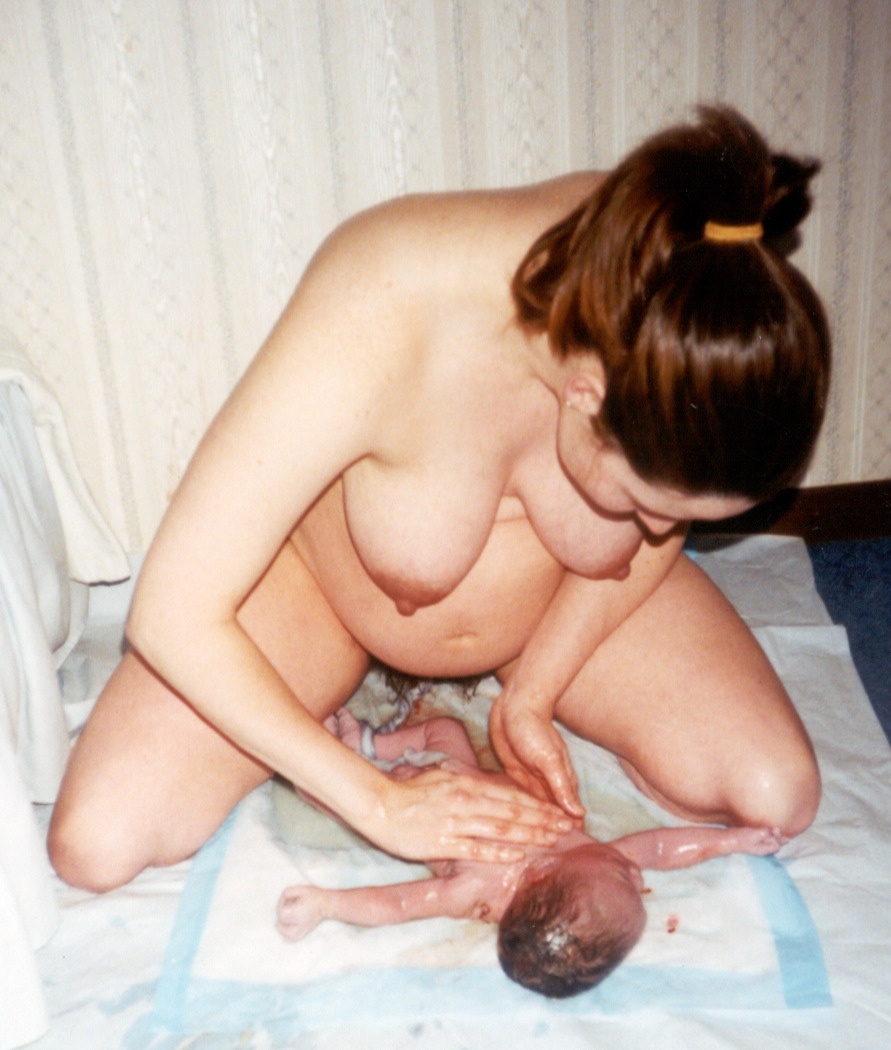http://www.huffingtonpost.com/tabby-biddle/women-speak-out-about-wha_b_781205.html
"Women die in childbirth as a result of systemic failures including: barriers to accessing care, inadequate, neglectful or discriminatory care, and overuse of risky interventions like inducing labor and delivering via cesarean section." -- Amnesty International

For many of us who haven't yet been through childbirth, there's an image we have of what it's like: A woman is rushed to the hospital in a taxi; she gets put in a wheelchair and is rolled down the hallway in dire emergency; then we see her screaming, and yelling in pain and then... there's the baby.
Sadly, this is the image that a lot of television shows have put into our minds, and have led many of us to believe: Birth is scary. Birth is dangerous. And it might be better if we just numb out through the whole experience.
Because so many women don't have an image of what a natural, empowered birth looks like, there is a lot of fear surrounding the act giving birth. Accordingly, the majority of women give their inner authority over to doctors in their birth process. They trust the doctors more than themselves. The problem with this is that many women aren't aware that the majority of her doctor's medical decisions are being made today for monetary and legal reasons, and not necessarily for the good of her and her baby.
Here is the reality: Hospitals are businesses. They want those beds filled and emptied. They aren't really interested in having women with long labors hanging around. And there is something else you should know: Having a baby in a hospital might not be as safe as you thought.
Did you know that the United States has the second worst newborn death rate in the developed world... and one of the highest maternal mortality rates among all industrialized countries?

You can go to any other developed country in the world, and you will find that they are losing fewer women and fewer babies around the time of birth. The important thing to know here is that in these countries, midwives are attending 70 to 80 percent of the births (doctors are there for the small percentage that have complications). In the United States, midwives attend less than 8 percent of births.
Why is this number so low?
"I've interviewed a lot of nurse midwives and I've noticed that as soon as their practice reaches over 30 percent of the women in a certain hospital, the doctor will start firing them because that's too much competition," said medical anthropologist Robbie Davis-Floyd, PhD, in an interview for the documentary The Business of Being Born.
Hmmmm... interesting.
The common way to have birth now is be Cesarean section. Today in the United States, the Cesarean section rate is at an all-time high. Since 1996 the C-section rate has risen 50 percent, according to the National Center for Health Statistics.
Today one out of every three babies comes into this world by C-section.
This seems like a crazy statistic. What is really going on here?
Marsden Wagner, M.D., former director of Women's and Children's Health at the World Health Organization, gave his opinion in an interview for The Business of Being Born: "A Cesarean is extremely doctor-friendly, because instead of having a woman in labor for an average of 12 hours, 7 days a week. It's 20 minutes, and I'll be home for dinner."
Many women come to the hospital with a plan for a natural birth, but all too often their birth plan changes very quickly based on a doctor's decision (that is not necessarily based on any real complication). For example, one friend of mine had written a birth plan with her doctor. She would be having a natural, vaginal birth at St. John's Health Center in in Santa Monica, California. On the day of my friend's birth, her doctor did not show up. So my friend was then under the charge of another doctor. This doctor decided that instead of the natural birth my friend had wanted, she should have a C-section. His reason: she was taking too long in labor.
But the doctor forbade my friend from squatting and getting on all fours (apparently against hospital policy), even though it felt so good for her and it opened up her pelvis. (FYI: When he left the room, she went ahead and squatted anyway.) My friend knew she could give birth naturally. She felt deep inside that she had the strength and power to do this. She trusted herself. But the doctor kept insisting on a C-section.
After fighting off some medical interventions that the doctor was insisting on (one of these was the "fetal probe"), and a lot of eye rolling and shaming from the hospital staff in the process, her baby was born. While my friend was happy as can be about her new baby girl, she explained to me: "The birth was something that should have been beautiful, but degenerated into something that wasn't."
As Nadine Goodman, Public Health Specialist, has put it: "What the medical profession has done over the past 40, 50 years is convince the vast majority of women that they don't know how to birth."
I have heard too many stories from friends and family members where the hospital told them that they were open to the natural birth they wanted, but then the reality was so different. First came the Pitocin to speed up the labor, then the epidural to dull the pain from the strong contractions caused by the Pitocin, and then the C-section "for the safety of the baby."
"We need to make sure that we reduce the overuse of interventions that are not always necessary, like C-sections, and increase access to the care that we know is good for mothers and babies, like labor support." -- Maureen Corry, executive director of Childbirth Connection
As Dr. Eden Fromberg, OB/GYN, has admitted in an interview: "There was a doctor who used to train me who said, 'They can never fault you if you just section them. Just section them.'" In other words, the current thinking in the medical world is: avoid being sued at all costs.
"There's the prevailing sense among doctors that you don't get sued for the C-section you do, only the ones you don't," said Nan Strauss, a maternal health researcher for Amnesty International, quoted in The New York Times. Amnesty International published a report earlier this year declaring the country in the midst of a crisis in maternal health care.
The reality is that once the hospital starts with an intervention, it becomes a domino effect. They say: Thank God we were able to do all of these interventions to save your baby. But, as Eugene Declerqc, Ph.D., Professor of Maternal and Fetal Health at Boston University School of Public Health has said
.... the fact of the matter is if they didn't start the cascading of interventions, none of the rest would have been necessary.
[By the way, putting a woman flat on her back for giving birth literally makes her pelvis smaller and makes it much more difficult for her to use her stomach muscles to push. The result: It is much more likely that she will need an episiotomy and a vacuum or forceps will be used to deliver the baby.]

Negotiating their way through the hospital environment is a power struggle that many women aren't interested in, so they are choosing to have their babies at home.
"For most women who are having a normal, healthy pregnancy, it can be safer to have a home birth," said Cecily Miller, prenatal and perinatal specialist living in Los Angeles, in an interview with me.
When I asked Ms. Miller to tell me more about the benefits of a home birth for expectant moms, here is what she told me:
"Giving birth is a rite of passage. It is an initiation into motherhood. If we want an empowered initiation where women are honored in the female body, and we are ushering in new life to the society, then women need to feel safe in their birth process... Giving birth is the most intimate experience we can imagine. And how we make love is how we want to give birth."
Cecily explained to me that the qualities of making love and the qualities of the environment -- dim lights, private space, intimate space -- is the same conducive environment for birth. It should be a place where a woman feels she can be herself, which, as Cecily explained, is usually at home.
Sure makes sense to me.
When a woman is at home she can groan and make natural sounds (these sounds actually open up her pelvis); she can eat when we she needs to; rest when she needs to; have privacy when she needs to; kiss her partner, be held; walk around, look out at nature, and basically do what feels best for her. "The comforts of home afford a woman her ground, her roots... and then the body will naturally in most cases, open, and will give birth," explained Cecily.
A friend of mine who had both of her babies at home described just that: "The best thing about giving birth at home was that I never had to leave my home. I could be rooted there. My husband brought me smoothies. I could hop in the tub when I wanted to. I could get on all fours. Then after the birth, I was exhausted and all I wanted to do was curl up with my baby, and that is exactly what I did."
When I asked her about her confidence level for her home birth, she explained to me that through her birth classes and her yoga practice she felt prepared. "Deep breathing, steady focus, determination, and a desire to do it myself helped me bring my babies into the world." she said. My friend explained that when the time came, she allowed her body to take over and do the rest. "I really do believe we are all strong women. I think the whole hospital realm has brainwashed women to think: 'Oh you can't handle this, so we will give you drugs.' It's pretty sad." Agreed. She added: "While giving birth was the most challenging thing I've done in my life, having my children at home was comforting, inspiring and empowering."
While a home birth might not be for every woman, it's my hope that more women will consider it as an alternative to the institutionalized and currently over-medicalized environment of the hospital. As Cara Muhlhahn, a Certified Nurse Midwife in practice for more than 10 years, has said: A home birth gives the power back to the woman.

